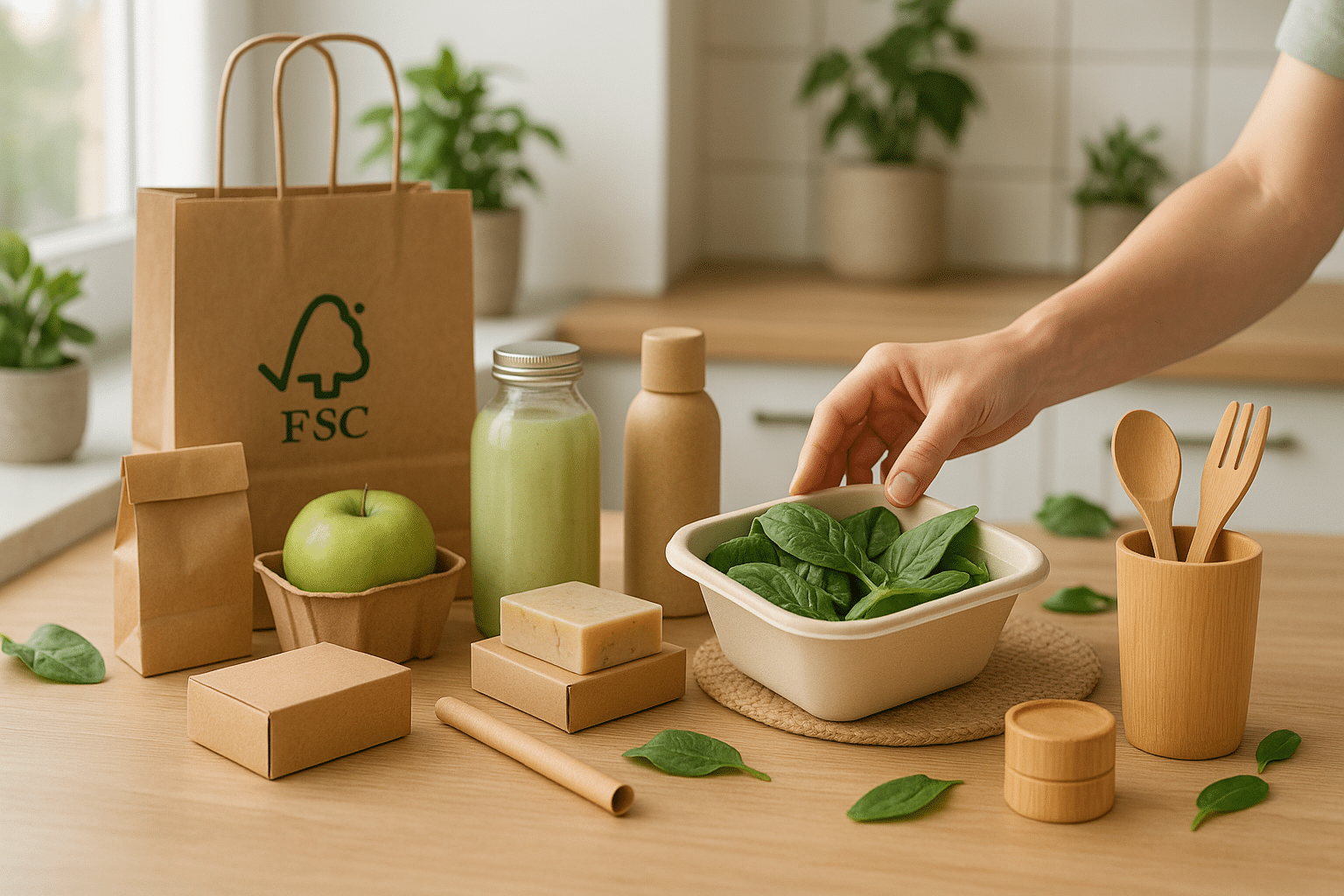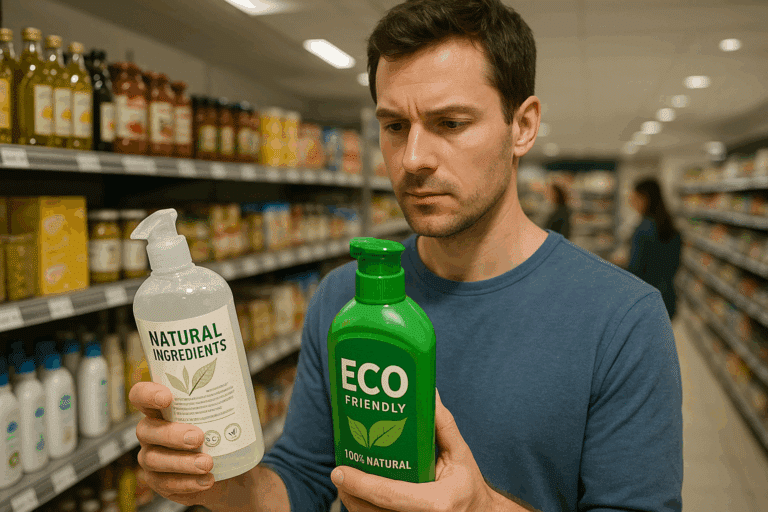With an increasing focus on sustainability and environmental consciousness, eco-friendly packaging trends are setting the course for a more sustainable future. 💚
Before delving into the heart of the matter, it is essential to comprehend the underlying issue. Packaging, despite its crucial role in protecting goods, has become a significant environmental concern due to its large carbon footprint and waste production. Hence, the urgent need for an environmentally conscious approach – a transition to green or eco-friendly packaging.
So, what does green packaging entail? It involves the use of materials and manufacturing methods that have a minimal impact on energy consumption, natural resources, and the environment at large. From biodegradable peanuts to compostable bags, these innovative packaging solutions are not just trends; they are ushering in a new era of sustainable business operations.
This article will take you through a journey of understanding these groundbreaking trends, focusing on their potential to rewrite the narrative of packaging and sustainability. We will delve into specific eco-friendly packaging trends making waves in the industry, exploring their benefits and how they can be utilized for a more sustainable future. 🌍
Why Eco-Friendly Packaging?
To fully appreciate the significance of this shift to green packaging, we will first consider the reasons why it’s become a hot-button issue. The driving forces behind this transformation include growing consumer demand for sustainability, legislative measures, and the realization of the long-term cost savings that sustainable practices can bring.
The Eco-Friendly Packaging Revolution
As we dive into the depth of this transformation, we will examine the various forms of eco-friendly packaging solutions that have emerged. These include biodegradable packaging, recyclable materials, plant-based packaging materials, and even edible packaging. Each of these solutions brings its unique qualities to the table, providing a multitude of options for businesses looking to go green.
The Challenges and Opportunities
While it may seem like a smooth sail towards a greener future, there are certain challenges that companies face in transitioning to eco-friendly packaging. We will dissect these hurdles, from cost implications to supply chain concerns, and offer insights on how they can be overcome. On the flip side, this shift also opens up a plethora of opportunities for companies, ranging from positive brand perception to cost savings in the long run.
As we explore these trending eco-friendly packaging solutions, this article aims to equip readers with the knowledge and understanding to make informed decisions. The journey towards a sustainable future requires collective action, and every step taken towards eco-friendly practices, no matter how small, is a stride towards a greener, healthier planet. 🌱
The truth is, green is no longer just a color – it’s a movement, a mission, a lifestyle. And in the packaging industry, green is definitely the new black. So, let’s unpack this together and discover how we can contribute to a sustainable future. Are you ready?
The Emergence of Green Packaging: A Response to Environmental Crises
In the wake of increasing environmental concerns, the shift toward sustainable practices has become a necessity rather than a choice. The packaging industry, a major contributor to global waste, is no exception. In response to this, green packaging, or eco-friendly packaging, has come to the forefront as an innovative solution for a sustainable future. If you’re interested in understanding the intricacies of this trend, watch this comprehensive video: “Green Packaging Solutions” by The Packaging School on YouTube.
Green packaging incorporates eco-friendly materials and manufacturing methods, aiming to reduce waste and environmental impact. It is primarily characterized by three key aspects: recyclability, reusability, and biodegradability. While traditional packaging relies heavily on single-use plastics, green packaging explores alternatives like bioplastics, recycled paper, and even mushroom-based packaging. This revolution in the packaging industry is not only combating waste but also adding a unique selling proposition for brands.
Let’s delve deeper into the world of eco-friendly packaging by exploring its evolution, benefits, and leading trends. Also, pay close attention to the comparison tables and links to helpful resources to gain a comprehensive understanding of this critical aspect of sustainable business practices.
Eco-Friendly Packaging: Then and Now
The journey of green packaging started with the basic idea of recycling. Initially, most companies were simply reusing old packages or using recycled materials for new ones. However, as environmental awareness increased and technology evolved, the scope of green packaging expanded drastically. For a glimpse into the evolution of eco-friendly packaging, check out the video: “The Evolution of Packaging” by BillerudKorsnäs on YouTube.
Today, green packaging goes beyond recycling and encompasses a broad spectrum of practices, including using biodegradable materials, reducing packaging layers, promoting refillable systems, and more. Moreover, companies are not only focusing on the packaging materials but also the manufacturing process to ensure minimal environmental impact. This shift towards comprehensive sustainability is a significant step in the right direction.
However, the transition to green packaging isn’t just about environmental responsibility; it also makes perfect business sense. A 2019 study by Trivium Packaging revealed that 74% of consumers are willing to pay more for sustainable packaging, illustrating a clear consumer demand for green alternatives. This consumer sentiment is driving businesses to invest in eco-friendly packaging and transform their operations.
Unboxing the Benefits of Green Packaging
The benefits of green packaging extend far beyond environmental impact. It plays a crucial role in brand perception, customer engagement, and even cost-effectiveness. To better understand these benefits, let’s look at them in detail.
From an environmental perspective, green packaging reduces waste generation, lowers carbon footprint, and promotes the efficient use of resources. It’s a win-win for the environment and businesses, as it not only helps preserve our planet but also aligns companies with global sustainability goals. This alignment is becoming increasingly important as consumers, regulators, and investors alike demand more sustainable practices.
Green packaging also has significant marketing advantages. As consumers become more environmentally conscious, they are actively seeking out brands that reflect their values. Thus, investing in green packaging can enhance a brand’s image, increase customer loyalty, and even drive sales. Moreover, innovative eco-friendly packaging designs can offer a unique unboxing experience, further enhancing customer satisfaction.
In terms of cost-effectiveness, while the initial investment in green packaging might be higher, the long-term benefits often outweigh the costs. Reduced material usage can lower production costs, and improved efficiency can streamline operations. Plus, with government incentives for green initiatives, businesses might find that going green is not just environmentally responsible, but economically savvy too.
Current Trends in Eco-Friendly Packaging
With the rise of green packaging, several exciting trends are shaping the industry’s future. From edible packaging to plantable packaging, companies are continually innovating to reduce their environmental impact. To stay updated with these trends, make sure to watch the video: “Eco-Friendly Packaging Trends” by Bizongo Design Lab on YouTube.
One of the leading trends is the use of biodegradable materials, particularly in food packaging. Companies are replacing single-use plastics with materials like bagasse (sugar cane waste), which decompose naturally over time. This trend is not only reducing waste but also creating value from previously disregarded resources.
Another emerging trend is the concept of zero-waste packaging, which involves designing packaging in a way that all its elements can be reused or composted, leaving no waste behind. Brands are exploring options like reusable containers, minimalistic designs, and refillable systems to promote zero waste. While this concept requires a significant shift in consumer behavior, it holds immense potential for a waste-free future.
Moreover, as technology evolves, so does green packaging. Innovations like plant-based bioplastics and mushroom-based packaging are pushing the boundaries of what’s possible. These materials, made from renewable resources, are not only eco-friendly but also offer unique aesthetic and tactile experiences, enhancing the overall product appeal.
The Future of Green Packaging
While we have made significant strides in green packaging, there is still a long way to go. Companies are continuously experimenting with new materials and designs, and as technology advances, we can expect even more innovative solutions.
The future of green packaging lies in striking the right balance between functionality, aesthetics, and sustainability. As brands strive to achieve this balance, they will need to work closely with packaging designers, material scientists, and sustainability experts. Only through a collaborative and holistic approach can we truly realize the potential of green packaging.
So, as we move forward, let’s keep an eye on this exciting field. Whether you’re a business owner, a consumer, or simply someone interested in sustainability, understanding green packaging can help you make more informed decisions and contribute to a more sustainable future. So, watch out for the latest trends, ask questions, and remember – every small step counts!

Conclusion
In conclusion, we have journeyed through a vast terrain of technical details, exploring intricate aspects of Information Technology and Engineering that, at first glance, may seem overwhelming. But as we have learned, understanding these complex concepts is not only possible, it is vital for those wishing to navigate today’s technologically-driven world.
We started with a deep dive into the world of software engineering, shedding light on its underlying principles and explaining its importance in our daily lives. We moved on to explore the role of technology in various sectors, from manufacturing to finance, healthcare to entertainment, demonstrating the omnipresence of IT and engineering.
A key takeaway from our exploration is the realization that while technology is often seen as a domain for specialists, it is increasingly becoming part of the common language. We discussed the importance of demystifying this space, highlighting the need for everyone to have a basic understanding of the technological landscape.
In this regard, the role of technical writing is paramount. As explained in the article, technical writing bridges the gap between specialists and non-specialists, making complex concepts understandable and accessible. It is a skill that requires mastery in both the technical domain and language craft, a balance that we strive to maintain in our articles.
We also emphasized the importance of continuous learning and adaptation in this fast-paced technological landscape. Technologies evolve, and so must our understanding.
As we continue to explore the world of technology and engineering, we invite you to join us in this journey. Let’s make technology an inclusive domain, breaking down barriers of jargon and complexity.
The importance of the topics discussed in this article cannot be overstated. The more we understand, the better we can navigate, participate in, and contribute to our increasingly digital world.
We encourage you to share this article with your colleagues and friends, especially those who may find this information beneficial. Feel free to comment below with your thoughts and experiences, and join us in our quest for knowledge.
Your involvement does not only enrich our community but also contributes to the broader understanding of these important topics. After all, knowledge grows when it is shared.
Remember, every complex idea was once simple. It’s the exploration and continual learning that makes us evolve. Keep exploring, keep learning!
For further reading, we recommend Internet Engineering Task Force (IETF) and World Wide Web Consortium (W3C) to stay updated with latest developments in the field.
We hope that you found this article enlightening and look forward to your active participation in our future discussions. Stay curious, stay inspired! 🚀🌐
This article was written by Rodrigo Almeida, an experienced technical writer with a background in software engineering. Rodrigo is known for his ability to explain complex concepts in an understandable manner, making technology and engineering accessible to all.



